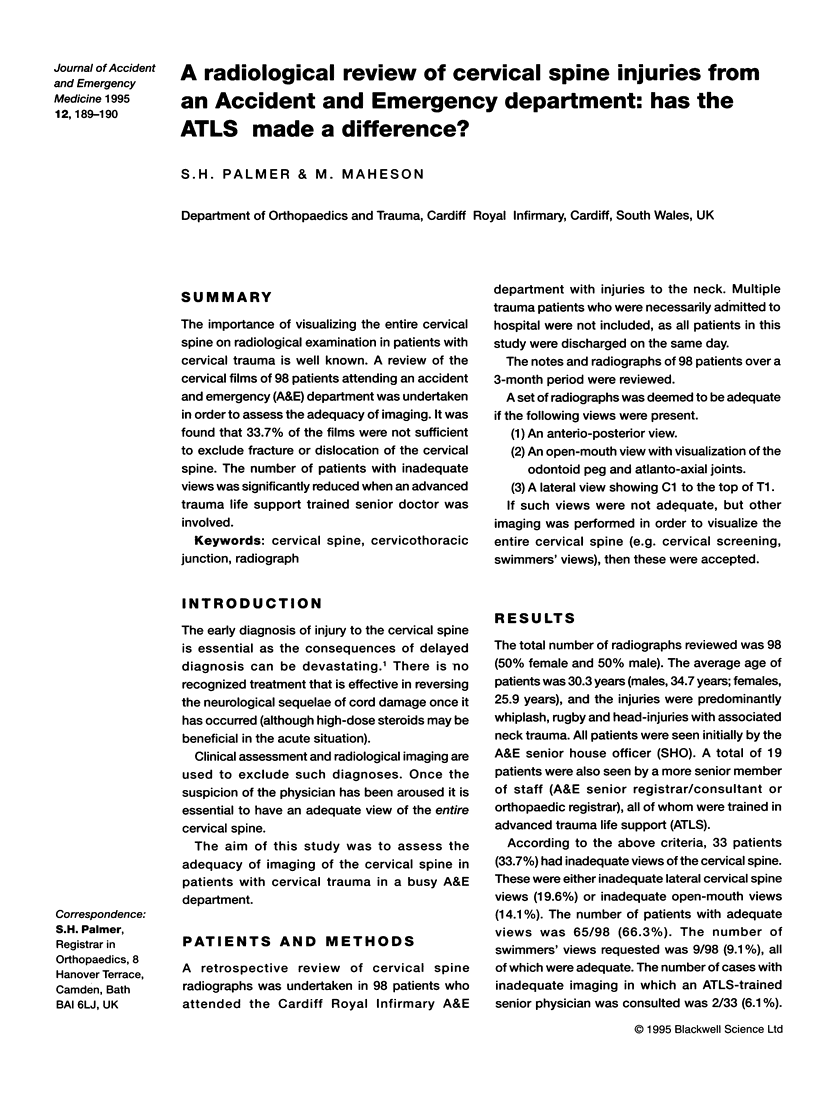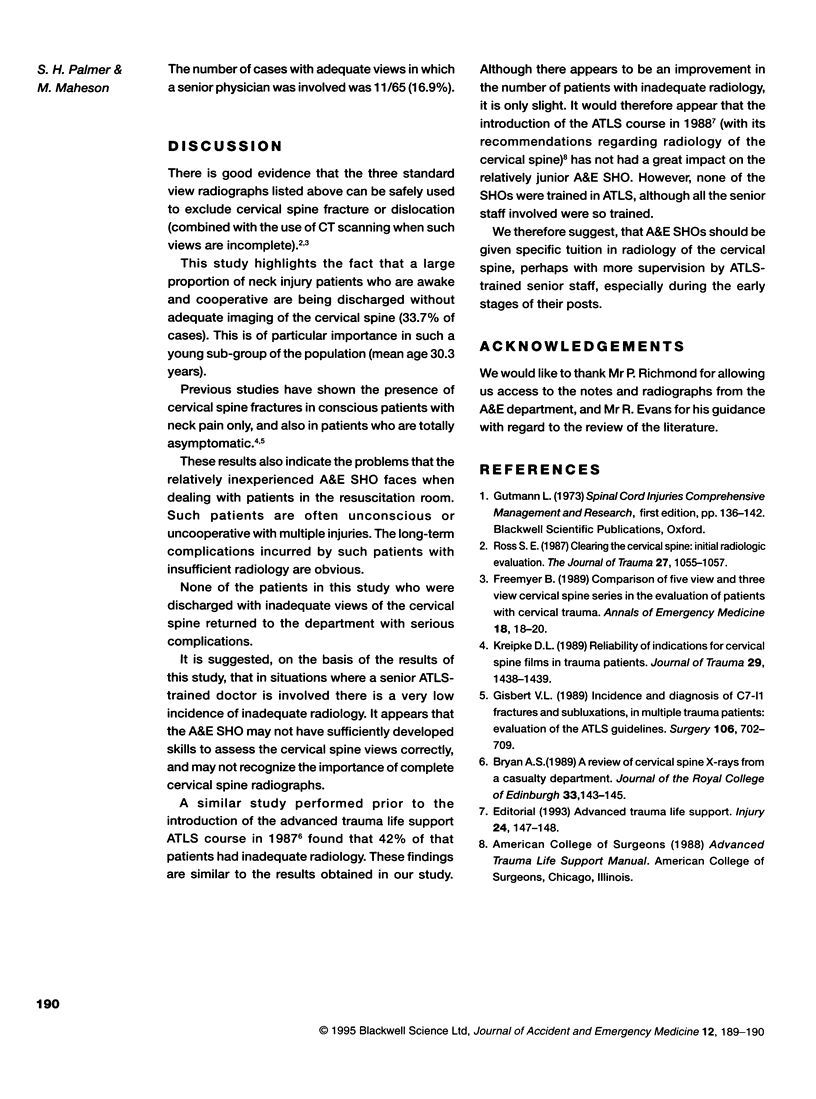Abstract
The importance of visualizing the entire cervical spine on radiological examination in patients with cervical trauma is well known. A review of the cervical films of 98 patients attending an accident and emergency (A&E) department was undertaken in order to assess the adequacy of imaging. It was found that 33.7% of the films were not sufficient to exclude fracture or dislocation of the cervical spine. The number of patients with inadequate views was significantly reduced when an advanced trauma life support trained senior doctor was involved.
Full text
PDF

Selected References
These references are in PubMed. This may not be the complete list of references from this article.
- Gisbert V. L., Hollerman J. J., Ney A. L., Rockswold G. L., Ruiz E., Jacobs D. M., Bubrick M. P. Incidence and diagnosis of C7-T1 fractures and subluxations in multiple-trauma patients: evaluation of the advanced trauma life support guidelines. Surgery. 1989 Oct;106(4):702–709. [PubMed] [Google Scholar]
- Kreipke D. L., Gillespie K. R., McCarthy M. C., Mail J. T., Lappas J. C., Broadie T. A. Reliability of indications for cervical spine films in trauma patients. J Trauma. 1989 Oct;29(10):1438–1439. doi: 10.1097/00005373-198910000-00024. [DOI] [PubMed] [Google Scholar]
- Ross S. E., Schwab C. W., David E. T., Delong W. G., Born C. T. Clearing the cervical spine: initial radiologic evaluation. J Trauma. 1987 Sep;27(9):1055–1060. doi: 10.1097/00005373-198709000-00017. [DOI] [PubMed] [Google Scholar]


